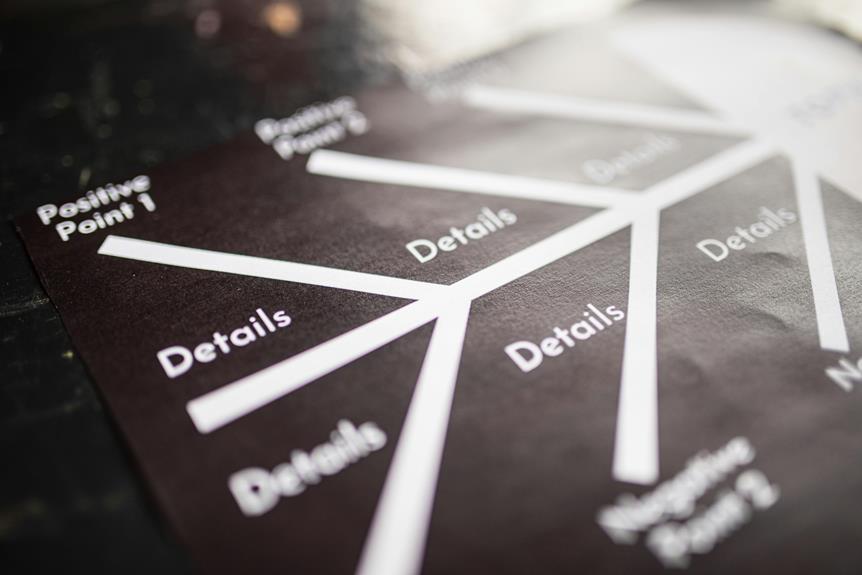I've cracked the code to boosting sales, and it's simpler than you think. It's all about mapping your customer's journey. By pinpointing where buyers linger and what sparks their decisions, I'll show you how to tailor your content, optimize conversion paths, and refine your strategies.
Say goodbye to guesswork and hello to control. Dive in as I unravel the secrets to revolutionizing your sales funnel with journey mapping. Let's get your numbers soaring!
Understanding Customer Journey Mapping
I'll break down customer journey mapping as a strategic process to visualize the path a customer follows from initial contact through the completion of a purchase. This is about gaining control over the sales experience, ensuring no touchpoint slips through the cracks.
I'm mapping each stage—awareness, consideration, decision, and post-purchase—to pinpoint exactly where my potential customers are dropping off and why. With this insight, I can tailor my strategies to meet their needs, refine my messaging, and ensure that every interaction is purposeful and impactful.
I'm not just guessing what my customers want; I'm using data to understand their behaviors and preferences, which allows me to craft a seamless and persuasive journey that directly addresses their demands and moves them efficiently towards conversion.
Identifying Key Touchpoints
In journey mapping, I'm delving into the sales funnel to pinpoint the critical touchpoints where customers interact with my brand. These moments are pivotal; they're where I can gain insights, foster engagement, and drive conversions.
To visualize this, consider:
- The First Impression: This is where potential customers first encounter my product or service. It could be through an ad, a social media post, or a friend's recommendation.
- The Consideration Stage: At this point, they're evaluating my offerings, comparing features, and reading reviews.
- The Decision Point: Here's where the magic happens. They've weighed their options and are ready to take action—subscribe, purchase, or book a consultation.
Understanding these touchpoints gives me the control to optimize each interaction, ensuring a seamless and persuasive journey for every customer.
Tailoring Content to Buyer Stages
To effectively guide potential customers through their buying journey, I must create content that resonates with each of their distinct stages. It's not just about throwing information at them; it's about delivering the right message at the right time.
I meticulously craft content that speaks to their needs, whether they're just becoming aware of a problem, considering possible solutions, or ready to make a decision.
I take control by aligning my content strategy with the buyer's mindset at each stage. I offer educational materials for beginners, detailed comparisons for evaluators, and compelling calls-to-action for those on the verge of purchase.
This isn't a one-size-fits-all approach; it's a strategic, targeted effort to engage my audience and drive conversions.
Optimizing Conversion Paths
After tailoring content to various buyer stages, I'm now focusing on streamlining the journey within my sales funnel to enhance conversion rates. It's about wielding control over the nuances of the buyer's experience, ensuring that every step is purposefully guiding them towards making a purchase.
Here's how I'm optimizing those conversion paths:
- Carve Clear Pathways: I remove any unnecessary steps that could distract or impede a prospect's progression towards a sale.
- Implement Intuitive Navigation: By making the interface straightforward, I empower users to move fluidly through the process, reducing friction and boosting conversion likelihood.
- Test and Tweak Relentlessly: I continuously analyze performance data to refine the journey, ensuring that potential customers aren't just arriving but are also converting.
Measuring and Refining Strategies
I've identified three key metrics to gauge the effectiveness of my refined sales funnel strategies.
First, conversion rates are crucial; they tell me if I'm turning prospects into paying customers effectively. I track these meticulously, adjusting my tactics when I see dips or plateaus.
Second, customer lifetime value (CLV) measures long-term profitability from each customer—I aim to maximize this by fostering loyalty and repeat business.
Lastly, churn rate is on my radar; it signals if I'm losing customers faster than gaining them. I analyze these metrics relentlessly, refining my strategies to ensure they're not just data points but tools for steering my business towards sustainable growth.
It's about taking command, making informed decisions, and staying ahead of the curve.
Conclusion
I've realized journey mapping isn't just a buzzword—it's a game changer for sales funnels.
By pinpointing key touchpoints and tailoring content to different buyer stages, I can optimize my conversion paths like a pro.
It's about continuous improvement, measuring results, and refining strategies.
With these insights, I'm not just following leads, I'm guiding them through a personalized experience.
It's time to roll up my sleeves and transform those insights into action!
